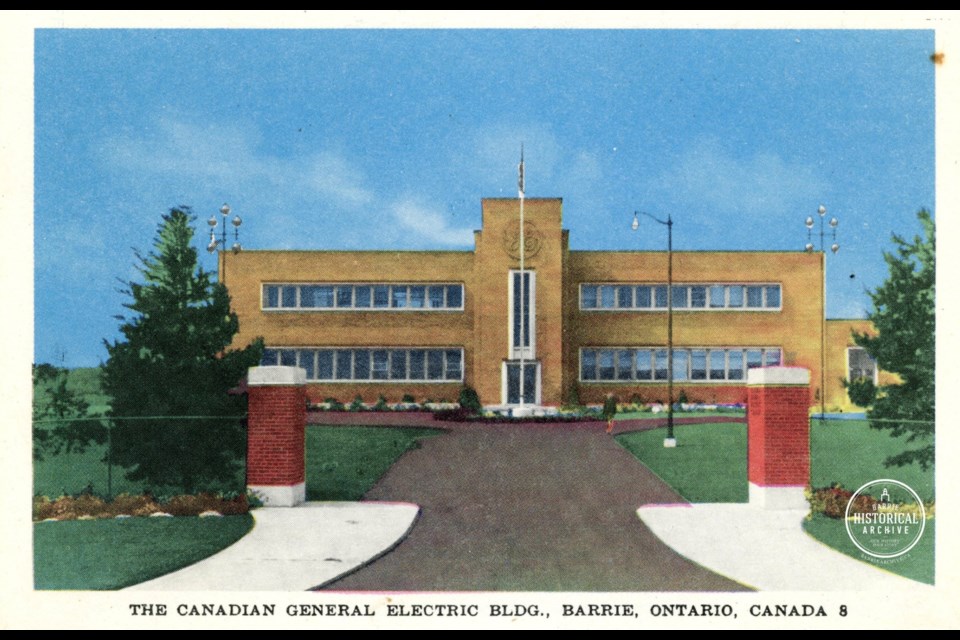This ongoing series from Barrie Historical Archive curator Deb Exel shows old photos from the collection and one from the present day.
Canadian General Electric — 80 Bradford St.
In January 1944, Mayor D.F. MacLaren spoke to council about his hopes for a board of trade or chamber of commerce to build business, increase tourism and attract new industry to Barrie.
Before the end of April that year, the new chamber had elected its executive and opened an office on Elizabeth Street.
By the end of October, the chamber had 300 members and rumours of negotiations with a major company were swirling. The talks continued into January 1945, when it was announced that Canadian General Electric would build a new factory in Barrie.
This important win for the city was largely due to the work of the chamber of commerce.
Canadian General Electric stated that Barrie was selected after careful consideration of possible locations across southern Ontario and western Quebec. They liked that Barrie was close to Toronto, had good highway and rail connections, was close to the appliance market and was generally a well-rounded community for its employees to live in.
The chamber announced in February 1945 that Canadian General Electric’s 50,000-square-foot plant would start production before the following Christmas, employing 100 people.
The building permit for the construction of the Canadian General Electric factory was issued the day after V-E Day on May 9, 1945.
The Agricultural Society had given up their land on Bradford Street for the new factory and had decided to purchase 50 acres in Allandale, the former Dyment stock farm, for their fairgrounds.
CGE’s foundation was in by mid-July and brickwork had started. Progress was halted temporarily until the project received 230 tons of steel in August and then construction was back on track.
On Dec. 1, 1945, production equipment arrived from Toronto and by mid-January 1946, irons and toasters were being manufactured, followed by heating pads and electric kettles by March.
Almost 7,000 people toured the factory during the official open house on Oct. 19, 1946.
The first electric blankets made in Canada were produced at the Barrie plant.
CGE blazed the trail for industrial development in Barrie and was influential in the city. Plant manager and Rotary Club president John Mitchinson made a convincing appeal, outlining that not only was his company’s future growth tied to having hospital and health-care facilities that could support a larger community, but a bigger hospital would also attract other industries.
This was the beginning of the 1947 campaign to build a new Memorial Hospital north of the one built in 1903 on Ross Street.
CGE continued to be Barrie’s largest employer, with about 140 employees. By October 1952, there were more than two million ‘Made in Barrie’ small appliances in Canadian homes.
The factory celebrated several milestones that decade: the one-millionth iron in 1952, the one-millionth kettle in 1954. By 1957, 630 people worked at the plant and in 1958, a certification vote for United Electric, Radio and Machine Workers of America was held.
Work started to taper off in the late-1970s. The appliance business was affected by imports and in 1983 CGE sold its housewares division to Black and Decker.
Sadly, the company that had such a big impact on Barrie’s industrial base was gone by 1986.


